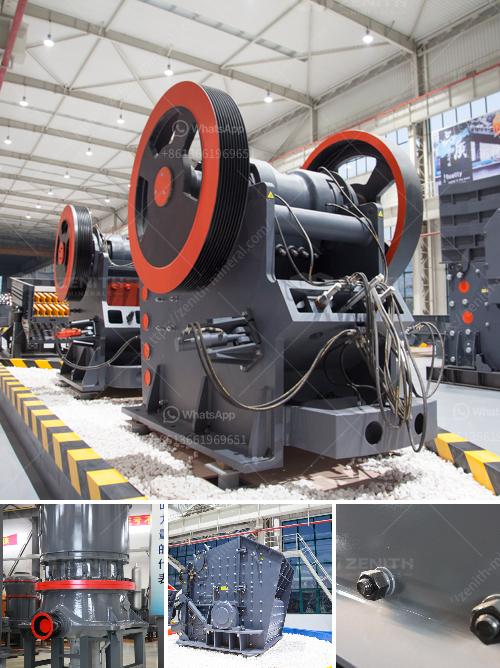A stone crusher is a machine designed to reduce large rocks into smaller rocks, gravel, or rock dust. Here's a basic overview of how it works:
Feeding: Rocks are fed into the stone crusher either by gravity or a manually controlled feed mechanism, typically through a hopper. This is often the starting point where raw material enters the crushing chamber.
Primary Crushing: The first stage of crushing usually involves a primary crusher, which can be a jaw crusher, gyratory crusher, or impact crusher. In a jaw crusher, for instance, a moving jaw applies pressure to a stationary jaw, crushing the rocks in between. In a gyratory crusher, a conical shape, bounded by a mantle and a concave liner, crushes the rocks through rotational motion.
Secondary Crushing: After the primary crushing, the material is sized by screening and conveyed to secondary crushers like cone crushers, hammer crushers, or impact crushers. In this stage, smaller stones are produced.
Tertiary Crushing: Some stone crushers include a tertiary crushing stage to refine the material further, producing even finer aggregates.
Screening: The crushed material is then screened to separate finer particles from coarser stones. This phase involves vibrating screens that sort the material according to different sizes.
Conveying: The final products are conveyed to storage or further processing, depending on the application.
Discharge: The processed material is finally discharged from the machinery through a final conveyor or chute.
Adjustments and Maintenance: Regular maintenance and adjustments are necessary to ensure efficiency and prevent breakdowns. This includes checking wear parts, adjusting the crusher settings for the desired aggregate size, and ensuring all components are working correctly.
Stone crushers are used in numerous sectors like mining, construction, and recycling to produce a wide range of materials from construction aggregates to road bases.
